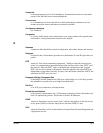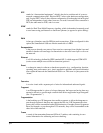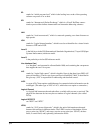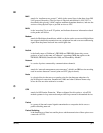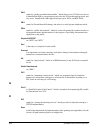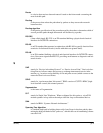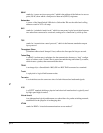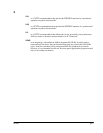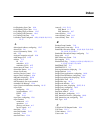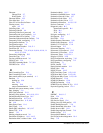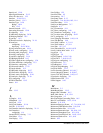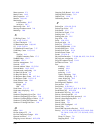
glo-10 SmartSwitch 1800 4.0 User Guide, Rev 01
SSAP
stands for “source service access point,” which is the address of the link service access
point (LSAP) from which a link protocol data unit (LPDU) originates.
Subscriber
is a user of the SmartSwitch 1800 device. Subscriber IDs are the called and calling
addresses used in X.25 call setup.
SVC
stands for “switched virtual circuit,” which is a temporary logical association between
two subscribers connected to a network, analogous to connection by a dial-up line.
T
TCP
stands for “transmission control protocol,” which is the Internet standard transport
layer protocol.
Throughput Class
(sometimes abbreviated “thruput” class) reflects the line speed in bits per second.
Token Ring
is a MAC (see that entry) technique for data transmission that uses a “ring” configu-
ration of stations, and a “token” that is passed around the ring until taken by a station,
which inserts a packet, then retransmits the token.
TPAD
is an integral (to a SmartSwitch 1800) SNA or BSC PAD connected to a terminal.
Trunk
is a physical or logical link between nodes.
Two-wire
is a circuit that uses the same two wires for both inbound and outbound signals.
V
V.35
is a CCITT standard defining a physical and electrical interface that is typically used
by high-speed digital carriers.
Virtual circuit
is an independent logical path between two subscribers of a packet switching network,
established for the purpose of exchanging data.
VTAM
stands for IBM’s “virtual telecommunications access method.”




